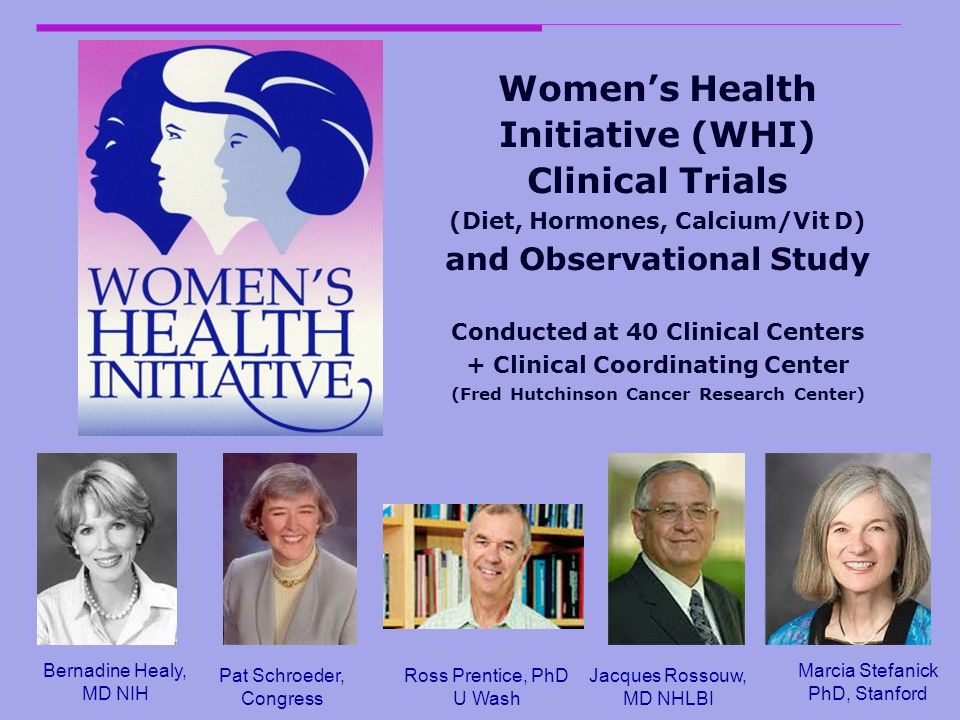Estrogen has been well-documented to promote cancer in tens of thousands of scientific reports. The most influential paper was published by the Women’s Health Initiative (WHI) study. It is one of the largest and most comprehensive studies focused on women’s health. It was launched in 1991 by the National Institutes of Health (NIH) to address major health issues that affect women, especially those in post menopause.
The study found that long-term use of hormones (estrogen and progesterone) increases the risk of breast cancer in postmenopausal women.

The WHI study is still ongoing. It is by far the longest-running clinical study on hormone therapy.
Additionally, a recent study by scientists at Harvard University provided new evidence. It indicates that estrogen not only promotes but also directly causes breast cancer. This new discovery further confirms the cancer risk associated with estrogen.
Following the WHI study report, sales of estrogen declined. Drug companies were unhappy with the findings. They have since attempted to reshape public perception. They sponsor researchers across multiple countries to conduct studies. Many articles have been published with conflicting observations against the conclusion of the WHI study.
How could this happen? Let’s consider an example to illustrate how companies may use simple tactics to generate contradictory findings.
Today, it is widely accepted that smoking causes lung cancer. The conclusion is based on the life experiences of many lung cancer patients with a history of smoking. However, this knowledge has a negative impact on the profits of the tobacco industry. To increase cigarette sales, tobacco companies might sponsor studies targeting college students for a four-year duration. The study would find that none of the smokers developed lung cancer. They could claim that previous studies linking smoking to lung cancer are outdated. New evidence shows that smoking does not cause lung cancer.
Likewise, after the WHI study reported that estrogen increased the risk for breast cancer, drug companies sponsored similar studies worldwide. These studies showed that estrogen did not increase the risk of breast cancer and is safe for women, even safe for breast cancer survivors who are highly sensitive to estrogen. As a result, the company-sponsored researchers claimed that the previous studies were outdated. People should accept their new findings.
Their study designs look logical, and their conclusions appear scientifically sound. How can we determine which to believe: The WHI report or the new data from drug company-sponsored studies?
A. Identify Credible Information
For a study on a product’s cancer risk, two factors are critical: the duration of the study and the financial sponsorship.
- Duration: Short-term studies can’t provide accurate information on cancer risks, which take decades to develop. Any conclusion regarding estrogen safety based on short-term data is misleading. The example of the 4-year study on college students that showed smoking did not cause lung cancer is not credible, because lung cancer does not develop in 4 years. To develop lung cancer, even with persistent smoking, a longer duration is required. Likewise, the same thing is true for breast cancer.
- Sponsorship: Studies sponsored by companies that sell estrogen may have a conflict of interest. For instance, a study that concluded that vaginal estrogen cream is safe for breast cancer survivors is sponsored by a company that sells vaginal estrogen cream. Because the company pays researchers, they may have an incentive to promote the company's product. This raises a flag. The data may be questionable due to a potential conflict of interest. In fact, studies showed that vaginal absorption of estrogen from a vaginal cream can be as rapid as orally ingested estrogen pills. The vaginally delivered estrogen is not safer than the orally ingested estrogen, especially among breast cancer survivors.
The WHI study has a long duration of over three decades and is publicly funded by the NIH, with no commercial interests associated with it. Therefore, the WHI report is more credible. It is not outdated.
B. Trust Your Common Sense
Additionally, you can use your common sense to find out the answer. Today, there are 5.5 million women with a history of estrogen-sensitive cancers (4.3 million breast, 0.95 million uterine, and 0.25 million ovarian) living in the United States. You may find them in your family, among relatives, and in your neighborhood. By talking to them, you may find that many of them do not have a family history of cancer, but may have a history of taking hormone replacement therapy. Their life experience tells that estrogen has a risk of cancer.
Hormones are not the only risk factor for breast cancer. There are other factors, such as alcohol, smoking, obesity, age, genetics, diabetes, radiation, and pregnancy. However, having other risk factors does not exclude hormones from being a risk factor. Unlike genetics and aging, the risk of cancer due to hormones is avoidable.

C. Trust Independent Scientists
Many leading scientists in the field of cancer research, not related to drug companies, have voiced their concerns about the cancer risk of estrogen. Their names and associated institutions are listed in this letter to the FDA.
A recent article that summarizes the evidence on menopausal hormone therapy (published July 15, 2025, in American Family Physician) provides valuable information.
